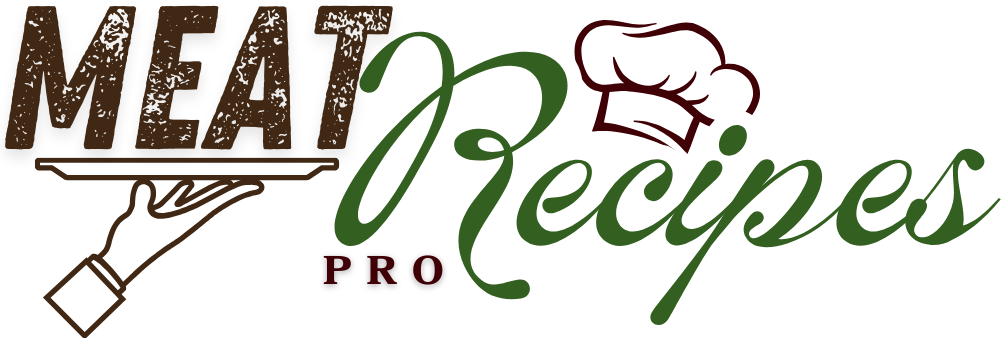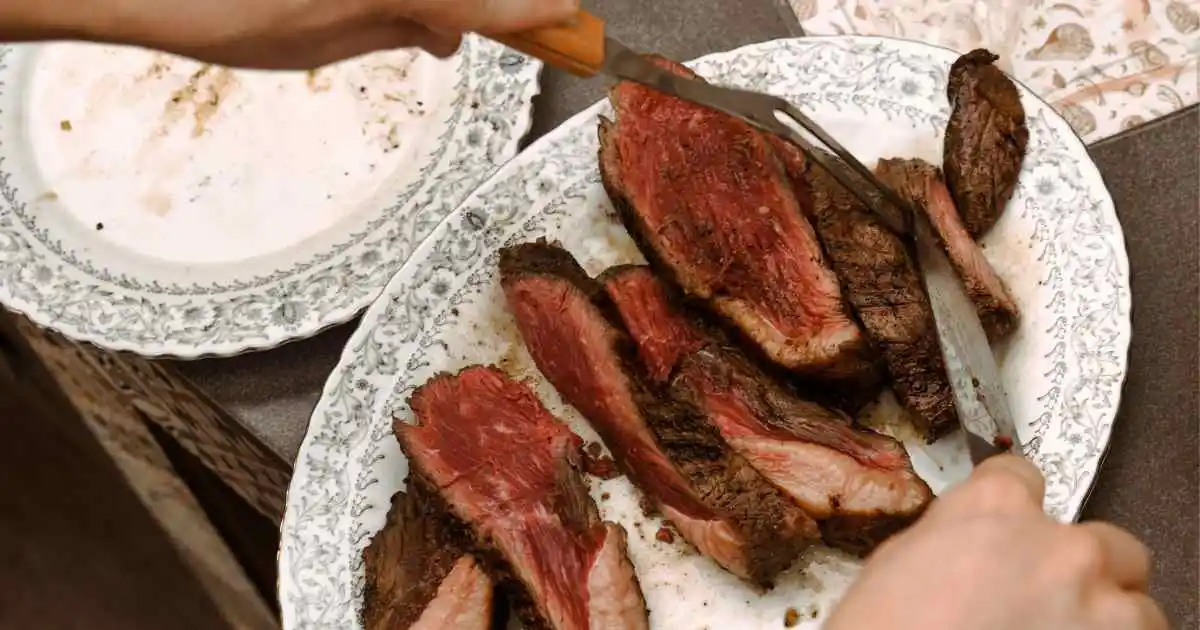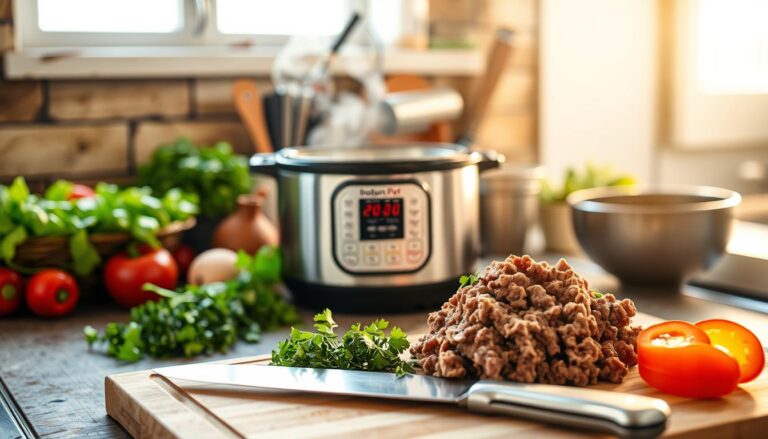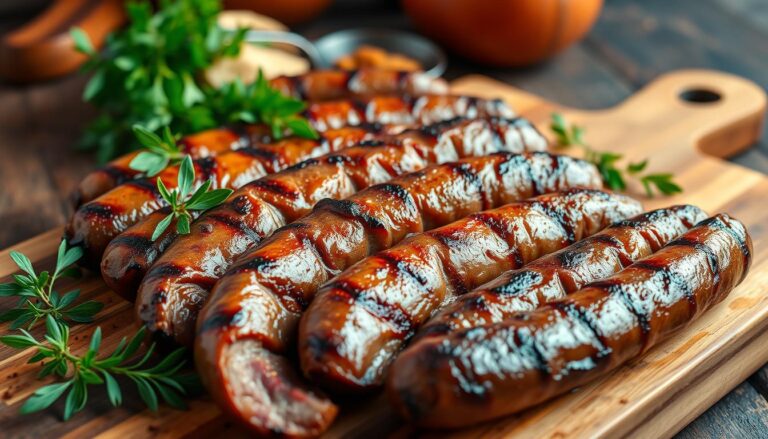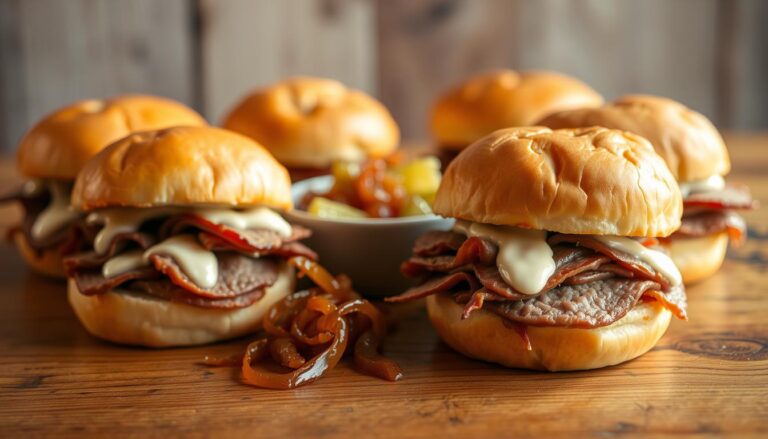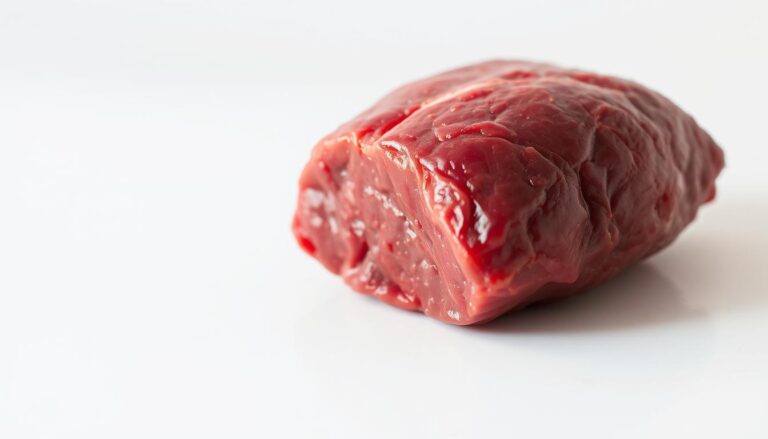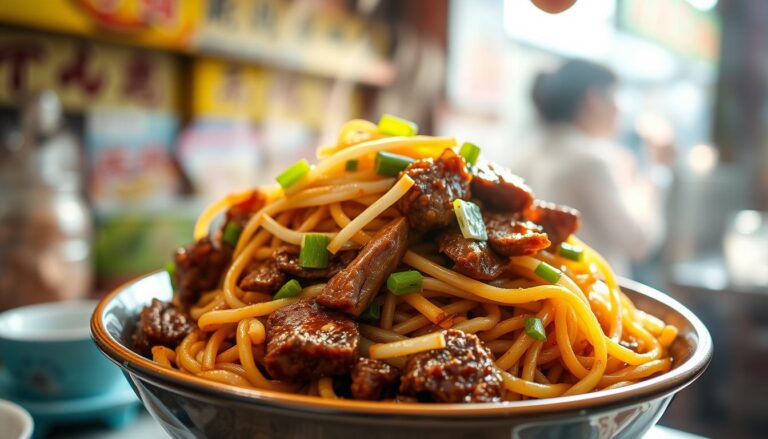How to Smoke Beef Short Ribs Like a Pitmaster
Table of Contents
Smoking beef short ribs is an art that needs patience and the right techniques. You also need some knowledge to get tender, flavorful results. You’ll learn the essential steps and equipment needed for this process.
To smoke beef short ribs like a pro, follow a few simple steps. The key is to cook the ribs low and slow. This lets the meat soak up the rich flavors of the smoke.
By the end of this guide, you’ll know how to smoke beef short ribs like a pro. You’ll impress your family and friends with your cooking skills.
Key Takeaways
- Understand the basics of how to smoke beef short ribs.
- Learn the essential equipment needed for smoking.
- Discover the importance of low and slow cooking.
- Master the technique of achieving tender, flavorful results.
- Impress your family and friends with your pitmaster skills.
Understanding Beef Short Ribs
To smoke beef short ribs properly, it starts with selecting the right cut. The cut you choose greatly impacts tenderness and flavor. Knowing the difference between various short ribs is essential.
Different Cuts of Beef Short Ribs
Beef short ribs come from two main areas: the plate and the chuck. Each offers unique qualities that affect how well they smoke and how flavorful they become.
Plate Short Ribs vs. Chuck Short Ribs
Plate short ribs come from the ribcage. They are naturally tender and rich in beefy flavor—ideal when you want to smoke beef short ribs with maximum juiciness.
Chuck short ribs, from the shoulder, contain more connective tissue. They become incredibly tender when smoked slowly over time.
What Makes Short Ribs Perfect for Smoking
Short ribs are rich in fat and connective tissue—two things that break down during long, slow cooking. That’s why they are ideal when you want to smoke beef short ribs. The fat renders slowly, keeping the meat juicy and full of flavor.
| Characteristics | Plate Short Ribs | Chuck Short Ribs |
| Cut Location | Ribcage Area | Shoulder Area |
| Flavor Profile | Rich, Beefy | Robust, with more connective tissue |
| Tenderness | Tender | Becomes tender with slow cooking |
Knowing this helps you choose the best type of rib to smoke beef short ribs like a true pitmaster.
Essential Equipment for Smoking Beef Short Ribs
To smoke beef short ribs well, you need the right tools. You’ll need a smoker that keeps a steady temperature and smokes right.
Types of Smokers
There are many smokers out there, each with its own features. Here are some popular ones:
- Offset Smokers: Great for a deep, smoky taste.
- Pellet Smokers: Easy to use and control the temperature well.
- Kamado Grills: Good for smoking and grilling, versatile.
Offset Smokers
A classic choice for anyone serious about learning how to smoke beef short ribs with bold flavor.
Pellet Smokers
Perfect for beginners. They burn compressed wood pellets and make it easy to smoke beef short ribs consistently.
Kamado Grills
Great for multi-purpose use, with superior heat retention that helps you smoke beef short ribs at consistent low temperatures.
Temperature Control Devices
Consistency is key when you smoke beef short ribs. Tools like wireless meat thermometers and digital controllers help maintain perfect smoking conditions.
Wood and Fuel Options
The wood you use directly affects how your smoke beef short ribs taste. Popular choices include:
- Hickory: Strong and smoky, perfect for bold beef flavor.
- Oak: A balanced wood, great for beginners.
- Mesquite: Intense and earthy, ideal for authentic Texas-style ribs.
Choose the wood that complements your rub and the cut of meat. Mixing woods can also enhance the flavor profile when you smoke beef short ribs.
Additional Tools and Accessories
To smoke beef short ribs successfully and efficiently, you’ll need more than just a smoker:
- Meat thermometer: Ensures ribs reach perfect internal temperature.
- Rib racks: Allow better airflow and more even cooking.
- Aluminum foil or butcher paper: Useful for wrapping during the stall phase to retain moisture.
Selecting the Perfect Beef Short Ribs
To get tender and flavorful smoked beef short ribs, start with the right ribs. The quality of the ribs is key to a great dish. Knowing what to look for is crucial.
Quality Indicators to Look For
When picking beef short ribs, look for a few things. Ribs with a lot of marbling are tender and flavorful. The meat should feel firm and smell fresh.
Grading and Marbling
Beef short ribs are graded by marbling. USDA Prime and USDA Choice are best for smoking. Marbling makes the meat tender and flavorful when cooked slowly.
Size and Thickness Considerations
The size and thickness of ribs matter. Thicker ribs take longer to cook, while thinner ones cook faster. Think about your cooking time and temperature when picking ribs.
Where to Buy Quality Short Ribs
The best grades for smoke beef short ribs are:
| USDA Grade | Marbling Level | Tenderness | Flavor |
| Prime | Abundant | Very Tender | Rich, Beefy |
| Choice | Moderate | Tender | Good, Beefy |
| Select | Small | Less Tender | Mild |
Choose USDA Prime or Choice for the most flavorful and tender results.
Preparing Your Smoked Beef Short Ribs
To make tender and flavorful smoked beef short ribs, you need to prepare them right. This means following a few key steps. These steps make sure your ribs are not just tasty but also safe to eat.
Trimming Techniques
Trimming your beef short ribs is crucial for even cooking and better flavor. Remove any extra fat to avoid greasy and unevenly cooked ribs. Use a sharp knife to trim the ribs carefully, making sure not to cut off too much meat.
Membrane Removal
The membrane on the back of the ribs blocks seasoning and causes toughness. Use a knife and a paper towel to peel it off completely before you smoke beef short ribs.
Seasoning and Dry Brining
Seasoning your beef short ribs lets you get creative with flavors. A dry brine, where you rub the ribs with salt and other seasonings and let them sit, can make the ribs more tender and flavorful.
Salt Ratios and Timing
The amount of salt you use can vary, but a good rule is 1 tablespoon of kosher salt per pound of ribs. Let the ribs sit for at least 2 hours or overnight for the best results.
Refrigeration Methods
When dry brining, it’s important to keep the ribs in the fridge at a temperature below 40°F (4°C) to stop bacterial growth. Place them on a wire rack over a baking sheet to let air circulate around the ribs.
By following these steps, you’ll be on your way to making delicious smoked beef short ribs that will wow everyone.
Creating the Perfect Rub for Beef Short Ribs
To get delicious smoked beef short ribs, a good rub is key. A great rub adds flavor and makes the ribs tender.
Essential Spice Components
A good rub for beef short ribs has a mix of spices. Key spices include paprika, brown sugar, garlic powder, onion powder, salt, and black pepper. These spices create a flavor that goes well with the beef.
Balancing Flavors
It’s important to balance the flavors in your rub. You want it to be neither too sweet nor too spicy. Changing the amounts of your spices can help get this right. For example, more brown sugar makes it sweeter.
Classic Texas-Style Rub Recipe
A classic Texas-style rub is simple but bold. Here’s a basic recipe:
- 2 tablespoons chili powder
- 1 tablespoon brown sugar
- 1 tablespoon paprika
- 1 tablespoon salt
- 1 tablespoon black pepper
- 1 tablespoon garlic powder
- 1 tablespoon onion powder
Alternative Rub Variations
While a classic Texas-style rub is a good start, you can try different variations. Add spices like cumin, coriander, or cayenne pepper for a unique taste.
Setting Up Your Smoker for Success
A well-set-up smoker is key to making delicious beef short ribs. You need to focus on a few important things to get it right.
Temperature Management
Keeping the temperature right is crucial for smoking beef short ribs. Your smoker should stay between 225°F and 250°F. This temperature helps cook the meat slowly, making it tender.
Creating the Ideal Smoke Environment
The smoke environment greatly affects the flavor of your beef short ribs. Make sure your smoker has good airflow. Adjust the vents to get the right amount of oxygen.
Water Pan Usage and Placement
A water pan in your smoker helps keep the meat moist. Put the water pan where the manufacturer says, usually below the meat. You can add apple cider or beef broth for extra flavor.
Wood Selection for Optimal Flavor
The wood you choose can change the flavor of your beef short ribs a lot. Different hardwoods give different tastes.
Hardwood Options
- Post Oak: Known for its strong, smoky flavor, post oak is a popular choice for smoking beef.
- Hickory: Hickory adds a robust, savory flavor that pairs well with beef.
- Mesquite: Mesquite has a strong, earthy flavor and is often used in combination with other woods.
Smoke Intensity Control
It’s important to control how intense the smoke is. You can do this by adjusting the wood and airflow. Too much smoke can overpower the meat, while too little may not add enough flavor.
| Wood Type | Flavor Profile | Best Used For |
| Post Oak | Strong, Smoky | Beef Short Ribs |
| Hickory | Robust, Savory | Pork and Beef |
| Mesquite | Strong, Earthy | Beef and Game Meats |
The Ultimate Guide to Smoked Beef Short Ribs
Getting perfectly smoked beef short ribs isn’t just about tossing them in the smoker — it’s a step-by-step process. From placement to wrapping, every detail matters when you want to smoke beef short ribs like a pro.
Placement on the Smoker
When putting beef short ribs on the smoker, make sure they have space. This lets air flow around each rib evenly. It helps cook them consistently without steaming.
Start with the ribs bone-side down to keep them moist.
Temperature Monitoring
It’s important to watch the smoker and rib temperatures. Use a thermometer to keep the smoker at 225°F to 250°F. For tender ribs, aim for an internal temperature of about 200°F.
The Stall: What It Is and How to Handle It
The “stall” happens when the meat’s temperature stops rising, usually at 150°F to 160°F. To get past this, wrap the ribs in foil or butcher paper. This keeps them moist and helps them cook more.
Wrapping Techniques (Texas Crutch)
Wrapping your ribs, known as the “Texas Crutch,” helps them stay tender. You can use butcher paper or foil for wrapping.
Butcher Paper vs. Foil
Butcher paper lets the ribs breathe, keeping the bark texture good. Foil seals tighter, making the ribs more tender. Your choice depends on what you like better.
When to Wrap
Wrap your ribs when they hit 160°F to 170°F. This helps get through the stall and cooks them until they’re tender.
Total Cooking Time Expectations
The cooking time for beef short ribs varies. It depends on the ribs’ size, the smoker’s temperature, and if you wrap them. Usually, it takes about 5 to 6 hours. Plan ahead to make sure your ribs are ready when you want them.
Testing for Doneness in Smoked Beef Short Ribs
To make sure your smoked beef short ribs are tender and tasty, it’s key to check if they’re done. This step is crucial for a great beef short ribs smoker recipe. By using different ways to check, you can get perfectly cooked ribs every time.
Internal Temperature Guidelines
The ribs should have an internal temperature of 195°F to 205°F for tenderness. A meat thermometer is the best tool for this. Make sure to put the thermometer in the thickest part of the rib, away from bones or fat.
Probe Test for Tenderness
Another good way to check is the probe test. Stick a probe or fork into the meat to see if it’s tender. If it goes in easily, the ribs are ready. If not, they need more time.
Visual Indicators of Properly Smoked Ribs
Visual signs can also tell you if your ribs are done.
Bark Development
A good bark is a sign of well-smoked ribs. The bark should be dark, caramelized, and a bit firm.
Meat Shrinkage
Meat shrinkage is another sign of doneness. As the ribs cook, the meat will pull back from the bones, showing they’re done.
By using these methods together—internal temperature checks, the probe test, and visual signs—you can make sure your smoked beef short ribs are always tender and delicious.
Resting and Serving Your Masterpiece
Resting your smoked beef short ribs is an art. It ensures the flavors you’ve worked hard on are preserved and presented perfectly. After smoking the ribs to perfection, it’s important to let them rest before serving.
Proper Resting Techniques
Resting involves more than just sitting. It’s about creating an environment for the meat to keep its juices and tenderness. Resting Time is key, usually 15 to 30 minutes, depending on the ribs’ size and thickness.
Resting Time
The resting time lets juices redistribute, making the ribs tender and flavorful. Larger ribs might need a longer rest.
Temperature Maintenance
Keeping a consistent temperature during rest is crucial. Wrap the ribs in foil and keep them in a warm place, like a cooler or a low-temperature oven.
Slicing Methods
The way you slice your smoked beef short ribs matters. Slicing against the grain makes the meat tender and easy to chew.
Presentation Tips
Presentation is key to making your dish look good. Add fresh herbs or barbecue sauce to enhance it. As Franklin Barbecue says, “The way you present your food is just as important as how it tastes.” A well-presented dish can make the dining experience better for your guests.
| Resting Technique | Description | Benefits |
| Foil Wrapping | Wrapping the ribs tightly in foil to retain heat and moisture. | Retains juices, keeps ribs warm. |
| Cooler Resting | Placing wrapped ribs in a cooler with towels to maintain a stable temperature. | Consistent resting temperature, tender results. |
Troubleshooting Common Issues with Smoked Beef Short Ribs
Smoking beef short ribs can sometimes go wrong, even with the best plans. Knowing how to fix these problems is key to getting tender, tasty ribs.
Tough or Dry Ribs
Tough or dry ribs usually come from cooking them too long or not keeping them moist enough. Keep your smoker at a steady temperature. Also, use a water pan to add moisture. If your ribs start to dry out, try wrapping them in foil to keep moisture in.
Temperature Fluctuations
Fluctuations in temperature can mess up your smoked beef short ribs. Make sure your smoker is well-insulated. Use a thermometer to keep an eye on the temperature. Adjusting your smoker’s vents can also help keep the temperature steady.
Smoke Management Problems
Getting the right amount of smoke is important for flavor. Too much or too little smoke can be a problem. Use the right wood and make sure your smoker has good ventilation to manage smoke well.
Bark Development Issues
The bark on your ribs adds texture and flavor. But, it can be hard to get right if the ribs aren’t seasoned well or if the smoker is too cool. To get a great bark, season your ribs well and keep your smoker at the right temperature.
Conclusion: Mastering the Art of Smoked Beef Short Ribs
Now you know how to smoke beef short ribs. With patience and dedication, you’ll get tender, flavorful results. These will impress anyone.
Success comes from choosing the right meat, preparing it well, and keeping your smoker at a steady temperature. Follow the tips in this article to make delicious smoked short ribs. They’ll become a favorite in your kitchen.
Keep improving by trying different rubs and flavors. This will help you create your own smoked short ribs recipe. With practice, you’ll make beef short ribs that everyone will love.
FAQ
What is the best type of wood to use for smoking beef short ribs?
The best wood for smoking beef short ribs is a matter of taste. Post oak, mesquite, and hickory are popular choices. They add a strong, smoky flavor that goes well with the rich taste of beef short ribs.
How long does it take to smoke beef short ribs?
Smoking beef short ribs takes about 5-6 hours at 225-250°F. The exact time depends on the ribs’ size and the smoker’s temperature. Cooking at a lower temperature will take longer.
What is the ideal internal temperature for smoked beef short ribs?
The ribs should reach an internal temperature of 190-203°F. This makes the meat tender and easy to pull off the bone.
Should I wrap my beef short ribs in foil or butcher paper?
You can use either foil or butcher paper to wrap the ribs. Butcher paper is better because it lets in a bit of air. This helps create a nice bark. Foil is good if you want the ribs to be very tender.
How do I prevent my smoked beef short ribs from becoming dry?
To keep the ribs moist, keep the temperature steady. Use a water pan to add moisture. Don’t overcook the ribs. A dry brine or marinade can also add moisture and flavor.
Can I use a gas smoker to smoke beef short ribs?
You can smoke beef short ribs in a gas smoker, but it’s not the best choice. Gas smokers often lack the smoky flavor of charcoal or wood smokers. Still, you can get good results by adding wood chips or chunks to the gas smoker.
What is the “stall” when smoking beef short ribs, and how do I handle it?
The “stall” is when the ribs’ internal temperature stops rising, usually at 150-160°F. To get past the stall, wrap the ribs in foil or butcher paper. Or, slightly increase the temperature to help the ribs continue cooking.
